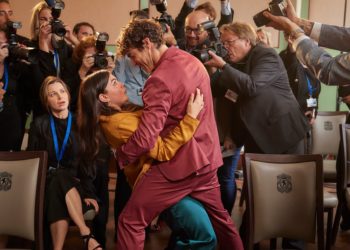Times Insider explains who we are and what we do and delivers behind-the-scenes insights into how our journalism comes together.
It was around 2 a.m. when the birds started to chirp outside of Carousel, a trendy bar in Bushwick, Brooklyn. I was with a small, committed group of friends, lingering as we considered our next move. I opened Google Maps and searched for “4 a.m. bars,” then “4 a.m. bars near me.” The results: A night club, a diner and a 24-hour bodega.
What happened to the 4 a.m. city I used to know?
Legally, bars in New York State can serve alcohol until 4 a.m. But I had learned in my previous reporting that newer bars like Carousel are closing hours before that.
Restaurant closing times are also trending earlier, and night clubs are struggling, so it seemed like an appropriate time to check in on the city that supposedly never sleeps. I wanted to find out why some bar owners were calling it quits early.
Thankfully, Tanya Sichynsky, an editor on the Food section at The New York Times, also wanted to know the answer. As a freelance journalist who has contributed to The Times since 2024, I have reported on Guinness beer converts and late-night coffeehouses. It’s work that quickly necessitated becoming a night owl.
My recent reporting started with Andy Simmons, one of the owners of Carousel. I had first interviewed him in 2023, when I was a reporter at Eater. Back then, he blamed the 2 a.m. closing time on his age: He owned one bar that operated until 4 a.m., he said. At 42, he didn’t need another.
As it turned out, the truth was more complicated than that. When we spoke again last month, he explained that permits for bars to stay open until 4 a.m. had become an issue in Bushwick, which has rapidly gentrified. The local community board had pushed for earlier closing hours. “All new bars in Bushwick have to have a 2 a.m. license,” he said.
I suspected that this trend was bigger than Bushwick.
Later that week, I called Raffaello Van Couten, a member of Brooklyn Community Board 1, which includes the trendy Williamsburg and Greenpoint neighborhoods. The board was pushing for similar curfews in those areas, he said, citing complaints from longtime residents about noise. “We don’t give out 4 a.m. licenses anymore,” he told me.
As someone who runs several bars in the area, Mr. Van Couten had a unique perspective. One of his bars, Dolly’s Swing and Dive, stays open until 4 a.m. several nights a week. He agreed that closing times are trending earlier, but he disagreed about the reason. Younger Americans are drinking less, he said, and late-night sales stink.
He suggested I visit a bar right before closing and observe the crowd. So the next weekend, I went hunting for other night owls to learn about their reactions to New York City’s changing bedtime. Were they wired, tired or somewhere in the middle?
The night of March 29 — and morning of March 30 — was funny. I slept from 9 p.m. to midnight and then hailed a ride share from Crown Heights to Bushwick, riding the shaky second wind of an energy drink. When I arrived at Carousel at 1:30 a.m., I felt the thump of house music through concrete. But where were the people? I staked out a spot on the sidewalk, by the bar’s rear doors.
At 2 a.m., the doors swept open, and people poured into the streets. As they lit cigarettes and considered the costs of taxis and ride shares, I interviewed Alyssa Grace, a 23-year-old fashion designer who was visiting from San Antonio. She was disappointed her night was ending at 2 a.m., only an hour later than the last call in Texas. “Right now, we’re getting tacos and going home,” she said.
I also saw a D.J., Nak Im, leaving the bar with his equipment. He said he had tweaked his performances in recent years; he plays faster songs earlier in the evening to account for premature closing hours and smaller crowds late at night.
After my article was published, many readers reminisced in the comments section about the nightlife of New York City’s past. “You could just bounce around and anywhere you went, you knew you would find something fun,” one reader wrote.
Many others seemed to agree that with fewer 24-hour gyms, diners and clandestine bars, New York City’s hours had simply changed. The pandemic or larger demographic shifts may be to blame.
“It’s been the city that sleeps,” another reader wrote on social media. “Maybe folks are tired.”
But not this reporter: I’m onto my next assignment. Even if that requires staying up until 4.a.m.
The post A Night Owl’s Jaunt Through an Evolving Nightlife Scene appeared first on New York Times.




